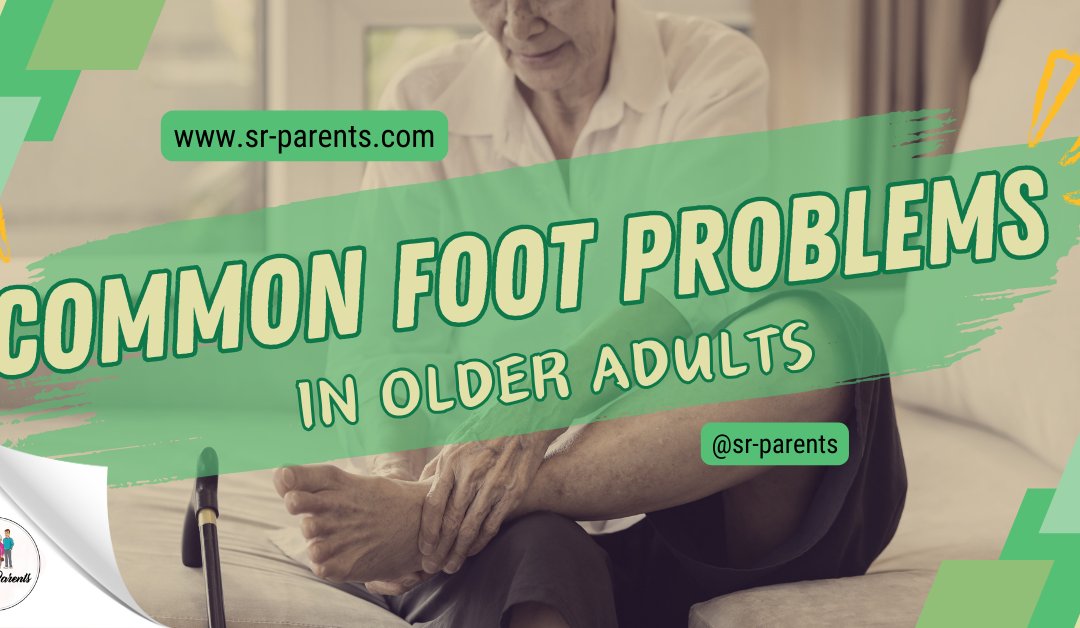The delicate dance between time’s passage and the well-being of our feet can give rise to painful feet, exacerbated by the constricting embrace of tight and narrow shoes. Aging feet, with their unique vulnerabilities, become susceptible to various foot and ankle issues, influenced by a multitude of risk factors.
In this intricate ballet of aging and foot health, the importance of proper footwear emerges as a critical factor, offering both relief and prevention for the discomfort that can accompany the natural progression of time. Let’s delve into the intricacies of these common foot problems in older adults and explore the transformative impact of investing in the care and support of our foundation – our feet.
Contents
Understanding Common Foot Problems in Older Adults
As people age, their feet change, leading to various foot problems. Older adults are more prone to foot problems due to years of wear and tear, chronic health conditions, and circulatory problems. Foot problems can range from minor issues such as dry skin, corns, and calluses to more severe problems such as foot ulcers, infections, and amputations. Older adults must understand the common foot problems and take steps to prevent and treat them.
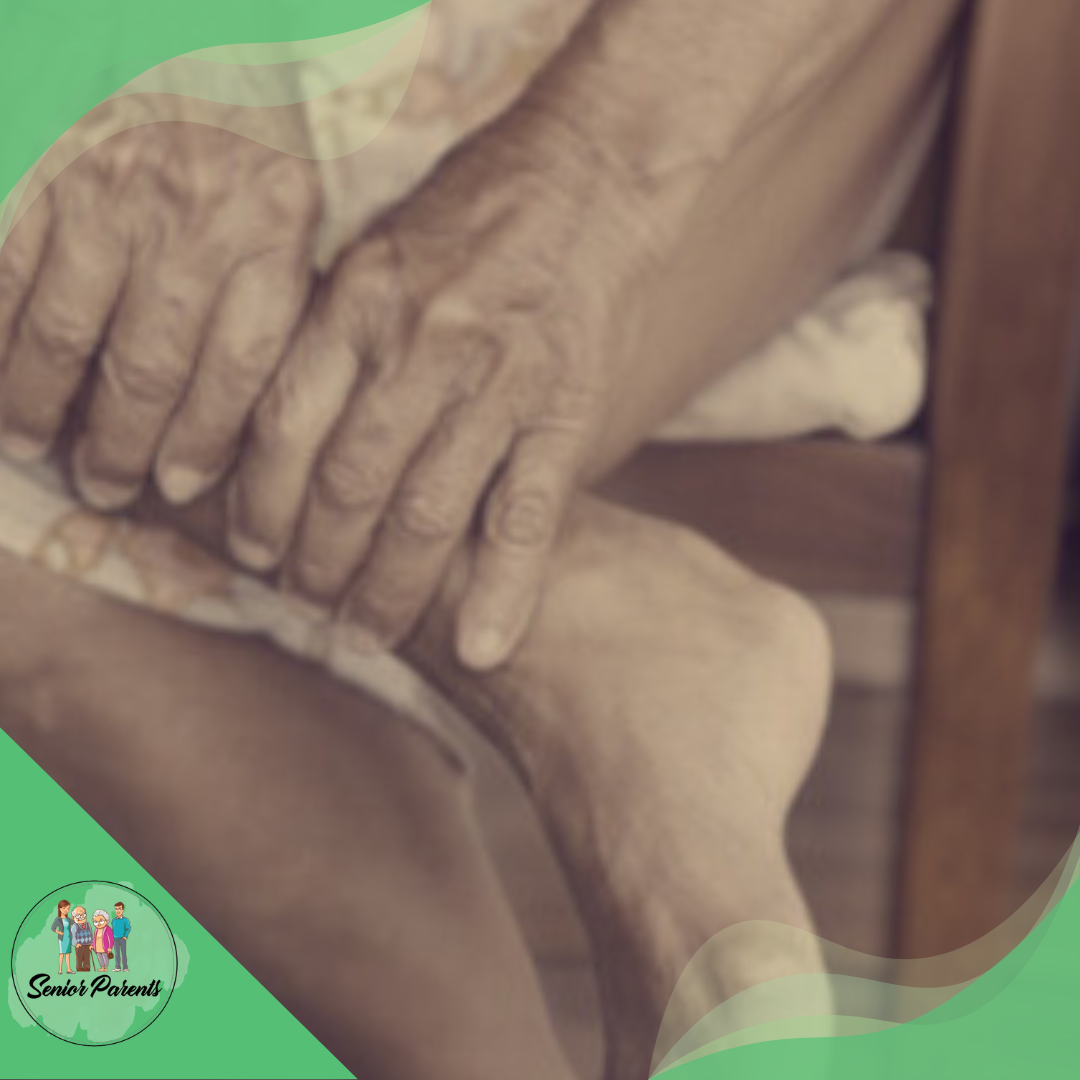
Prevention is critical to avoiding foot problems, and there are several things that older adults can do to keep their feet healthy. These include wearing comfortable shoes that fit well, maintaining good foot hygiene, and keeping feet dry to prevent fungal infections. Regular exercise can also help improve circulation and keep feet healthy.
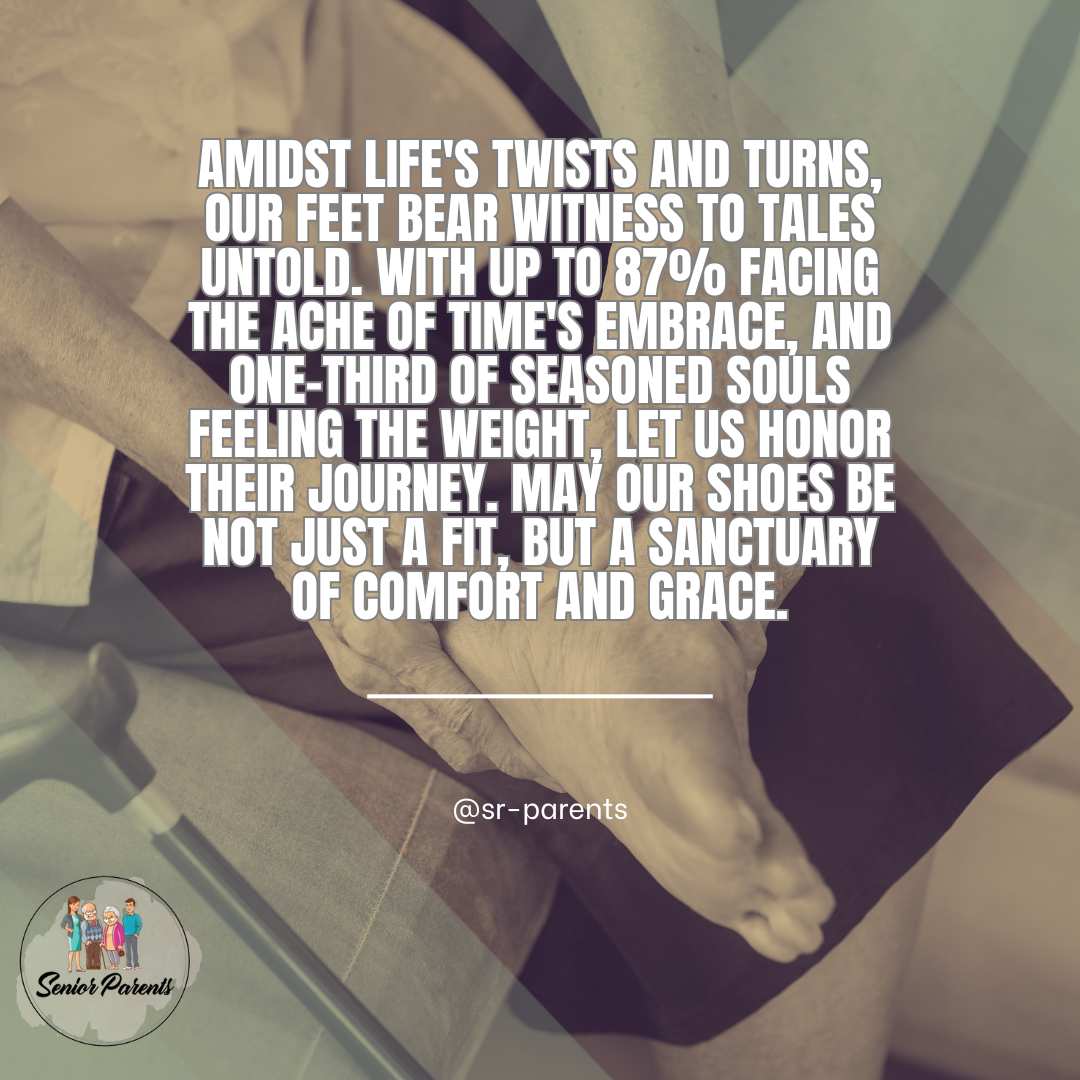
Common Foot Problems in Older Adults
As people age, their feet undergo various changes that can lead to foot problems. Older adults’ most common foot problems include arthritis, diabetes, plantar fasciitis, bunions, and hammertoes.
Arthritis
Arthritis is a condition that affects the joints and can cause pain and stiffness in the feet. Osteoarthritis is the most common type of arthritis that affects the feet. It occurs when the cartilage that cushions the bones in the joints wears down over time, causing the bones to rub against each other. This can lead to pain, swelling, and difficulty walking. Treatment for arthritis may include medication, physical therapy, or surgery.
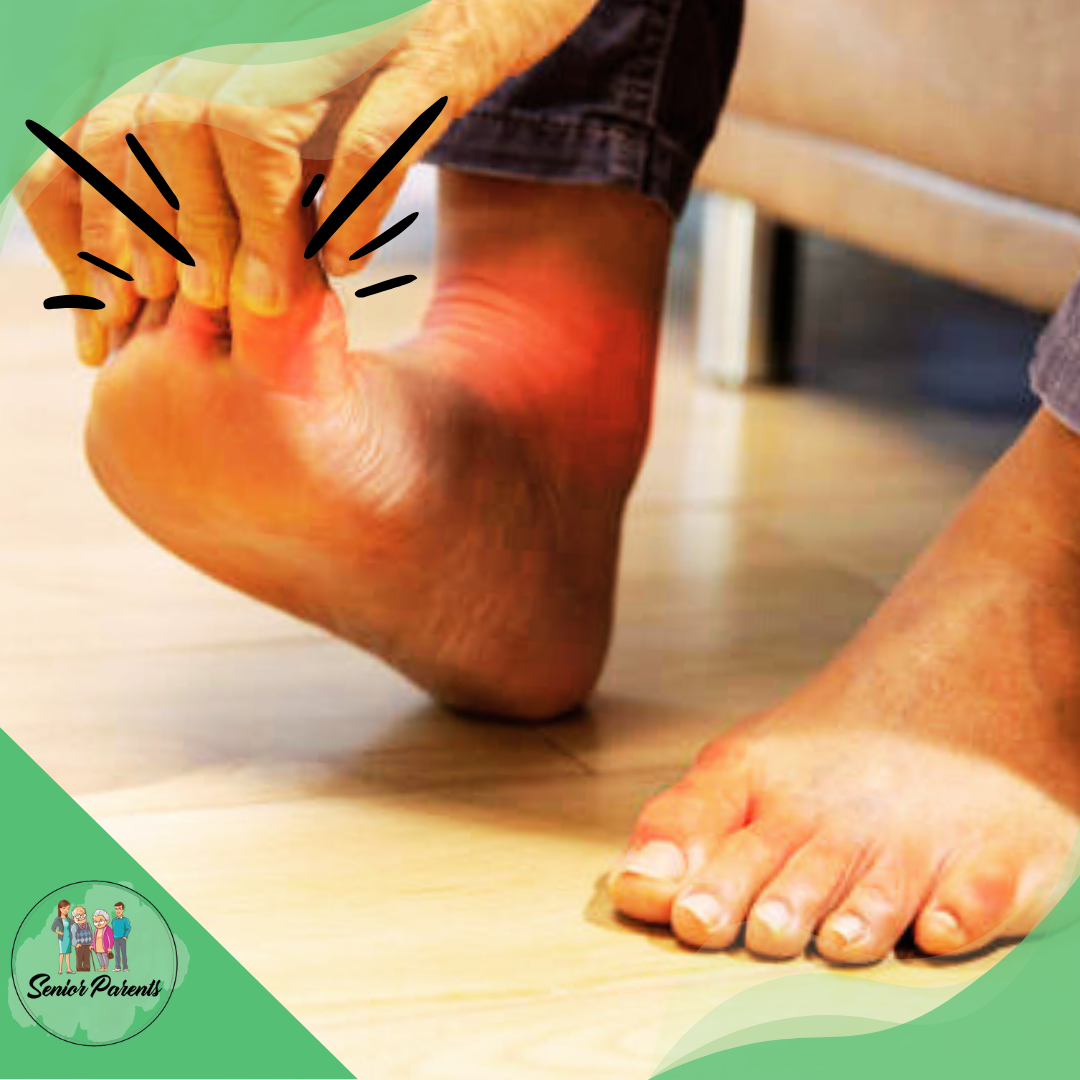
Diabetes
Diabetes can cause nerve damage and poor foot circulation, leading to foot problems. Some common foot problems associated with diabetes include calluses, corns, and fungal infections. People with diabetes should have their feet checked regularly by a podiatrist and should wear appropriate footwear to prevent foot problems.
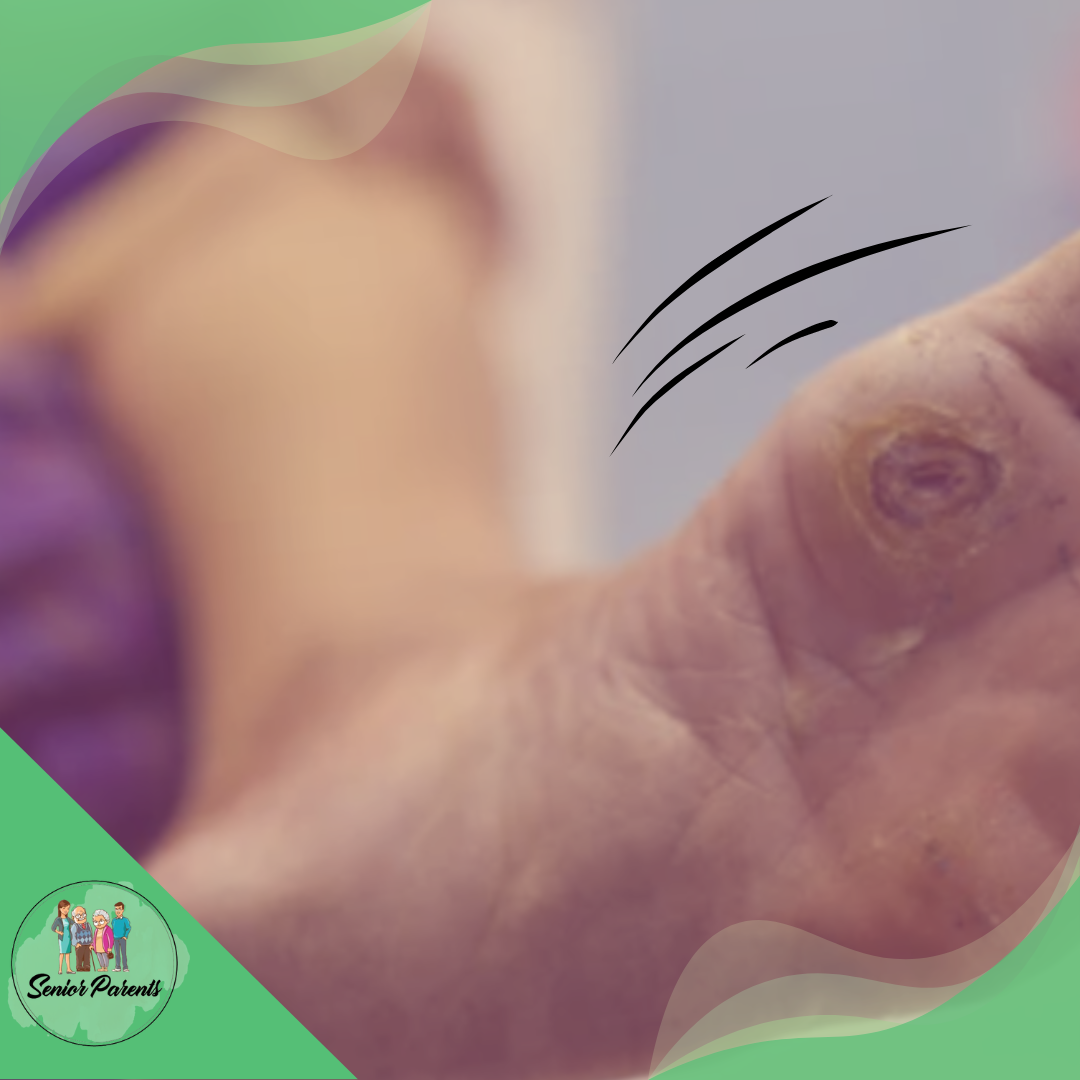
Plantar Fasciitis
Plantar fasciitis is a condition that causes inflammation of the plantar fascia, a band of tissue that runs along the bottom of the foot. This can cause heel pain and stiffness, especially in the morning. Treatment for plantar fasciitis may include stretching exercises, orthotics, or medication.
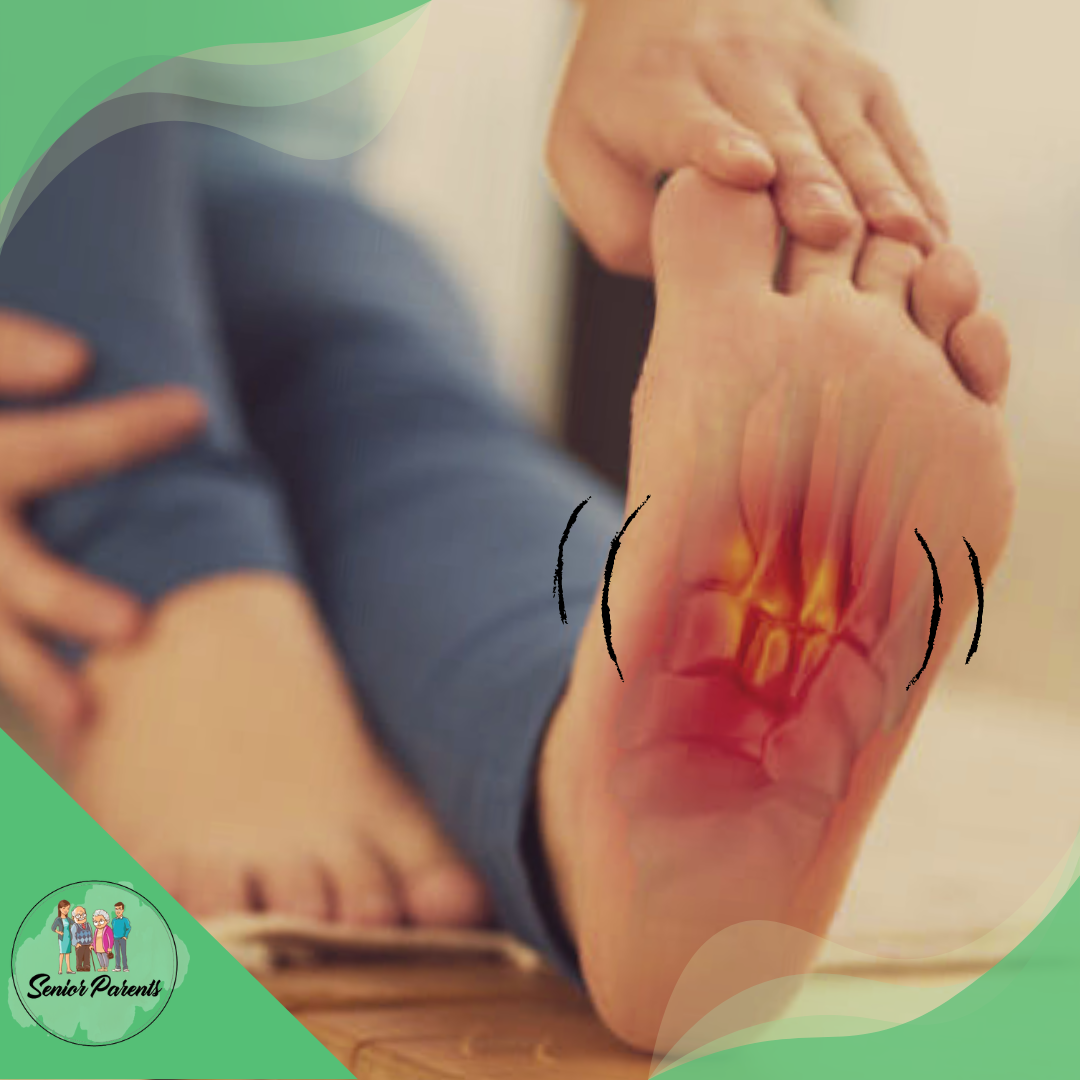
Bunions
Bunions are bony bumps that develop on the joint at the base of the big toe. They can cause pain, swelling, and difficulty walking. Bunions can be caused by wearing tight shoes or by an inherited structural defect in the foot. Treatment for bunions may include wearing wider shoes, using orthotics, or surgery.
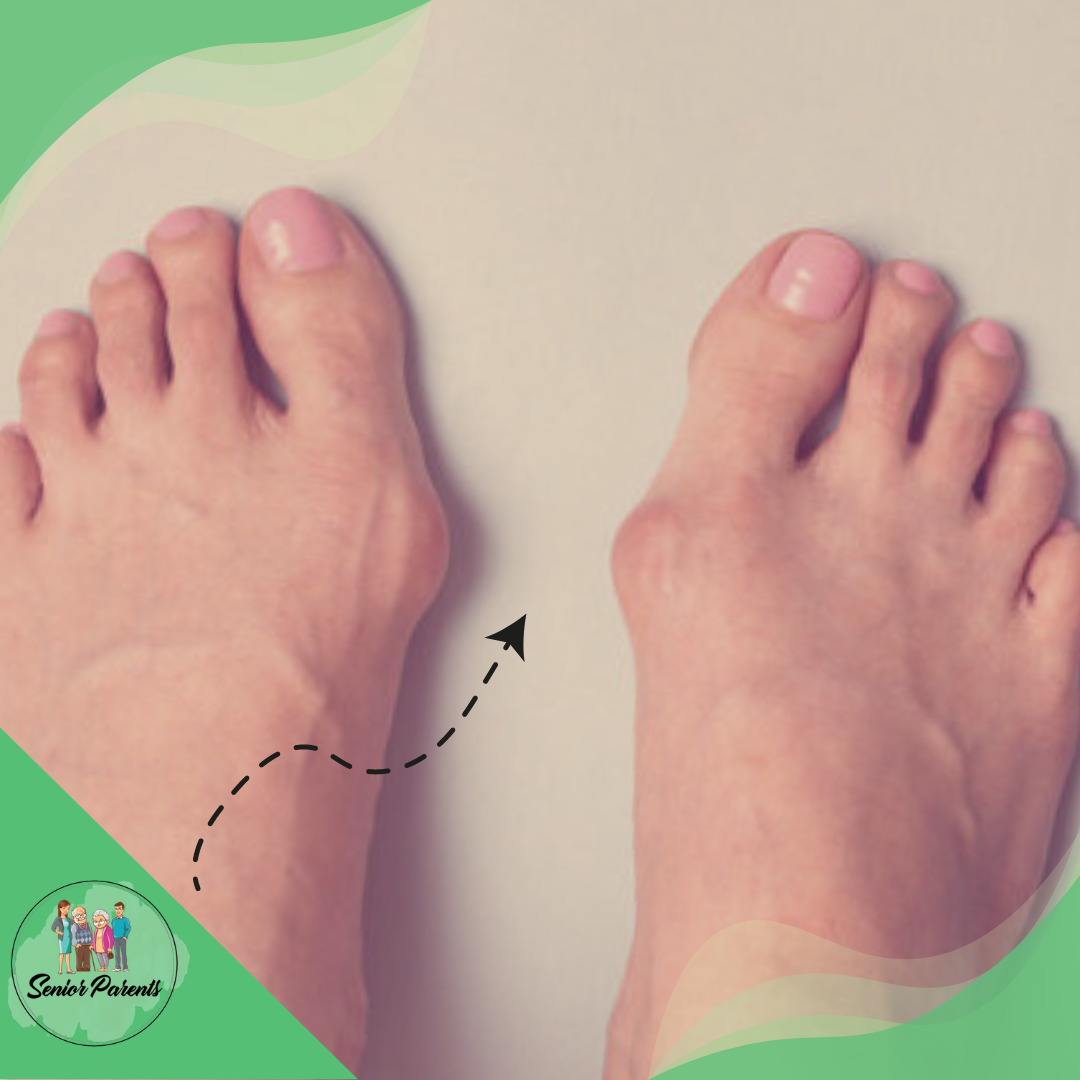
Hammertoes
Hammertoes are a condition in which the toe is bent downward at the middle joint, causing it to look like a hammer. This can cause pain, swelling, and difficulty walking. Hammertoes can be caused by wearing tight shoes or by an inherited structural defect in the foot. Treatment for hammertoes may include wearing wider shoes, using orthotics, or surgery.


Older adults are more prone to foot problems due to the natural aging process and other health conditions. It is essential to seek medical attention from a podiatrist if foot problems arise. Wearing appropriate footwear, maintaining good foot hygiene, and practicing regular foot exercises can also help prevent foot problems.
Prevention of Foot Problems in Older Adults
Proper foot care is essential to prevent foot problems in older adults. Several preventative measures can be taken to maintain healthy feet, including wearing proper footwear, good foot hygiene, and regular exercise.

Proper Footwear
Wearing correctly fitting shoes is crucial to prevent foot problems in older adults. Shoes should be comfortable, provide adequate support, and have a wide toe box to avoid rubbing and pressure on the toes. Shoes with a low heel and a non-slip sole can also help prevent falls and improve balance. It is essential to avoid high heels, pointy-toed shoes, and shoes that are too tight or loose.
Foot Hygiene
Good foot hygiene is essential to prevent foot problems in older adults. Proper foot hygiene includes washing feet daily with warm water and mild soap, drying feet thoroughly, and applying moisturizer to avoid dryness and cracking. It is also important to keep toenails trimmed and to avoid cutting them too short or rounding the edges, which can lead to ingrown toenails.
Regular Exercise
Regular exercise can help prevent foot problems in older adults by improving circulation, reducing swelling, and maintaining flexibility. Exercise can also help improve balance and reduce the risk of falls. Low-impact exercises such as walking, swimming, and cycling are ideal for older adults. Stretching exercises can also help maintain flexibility and reduce stiffness in the feet. In addition to these preventative measures, older adults need to see a podiatrist regularly to diagnose and treat any foot problems that may arise.
Common foot problems in older adults include heel spurs, aching feet, calluses, cracked heels, ingrown toenails, and injuries. Other foot abnormalities, such as tenderness, splint, tingling, and drainage, should also be evaluated by a podiatrist.
It is also important to note that certain medical conditions, such as gout, liver disease, and nail fungus, can affect the health of the feet. These conditions may require medical treatment such as uric acid-lowering medications, NSAIDs, corticosteroids, or antifungal medication. Maintaining healthy feet is essential for older adults to maintain mobility and prevent falls. Following proper foot care practices, older adults can prevent foot problems and keep fit, pain-free feet.
Treatment of Foot Problems in Older Adults
Foot problems are common in older adults and can cause pain, swelling, numbness, pressure, redness, and nerve damage. These issues can be treated with a variety of non-surgical and surgical treatments. It is essential to consult with a podiatrist or orthopedic surgeon to determine the best course of treatment for each case.
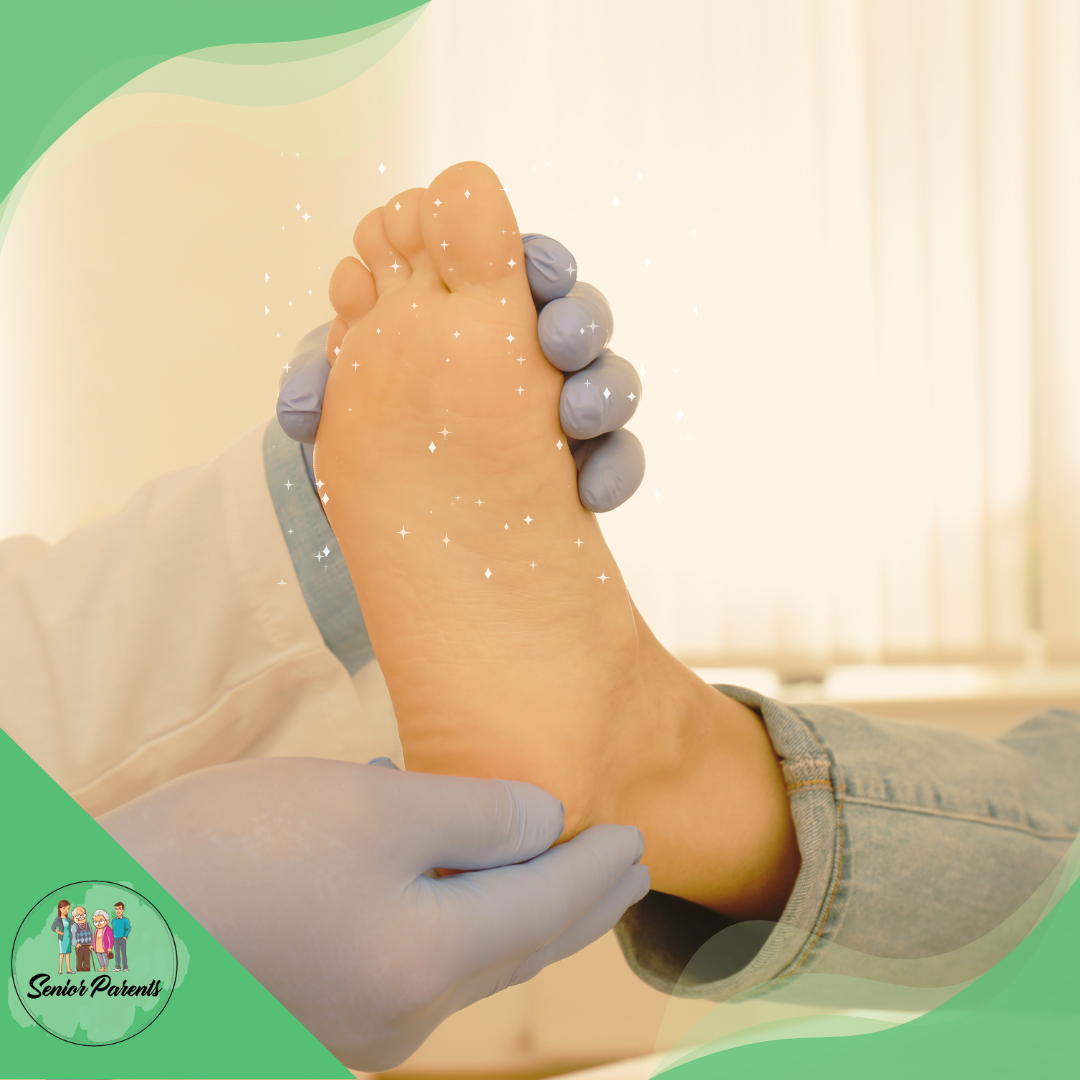
Non-Surgical Treatments
Non-surgical treatments for foot problems in older adults include:
- Rest: Resting the foot can help reduce pain and swelling.
- Ice: Applying ice to the affected area can help reduce inflammation.
- Elevation: Elevating the foot can help reduce swelling.
- Medications: Over-the-counter pain relievers such as ibuprofen or acetaminophen can help reduce pain and inflammation.
- Splints and braces: Splints or braces can help support the foot and reduce pain.
- Physical therapy: Physical therapy can help improve mobility and reduce pain.
- Custom orthotics: Custom orthotics can help support and reduce pressure on the affected areas.
Surgical Treatments
Surgical treatments for foot problems in older adults include:
- Bunion surgery: Bunion surgery can help correct the alignment of the big toe and reduce pain.
- Toe surgery: Toe surgery can help correct abnormalities and reduce pain.
- Heel spur surgery: Heel spur surgery can help remove abnormal growths on the heel bone and reduce pain.
- Ingrown toenail surgery: Ingrown toenail surgery can help remove the portion of the nail causing pain and drainage.
- Neuroma Surgery: Neuroma surgery can help remove a nerve causing pain and tingling.
- Joint replacement surgery: Joint replacement surgery can help replace damaged joints and improve mobility.
Various non-surgical and surgical treatments are available for foot problems in older adults. It is essential to consult with a podiatrist or orthopedic surgeon to determine the best course of treatment for each case.
Stepping Into Comfort: Empowering Older Adults’ Foot Health Journey
It’s crucial for us to address the common foot problems that affect our beloved older adults. Our dear seniors deserve to live their golden years with comfort and mobility, unburdened by foot-related challenges. We can make a remarkable difference in their lives by delving into the common issues they face and embracing preventive measures.
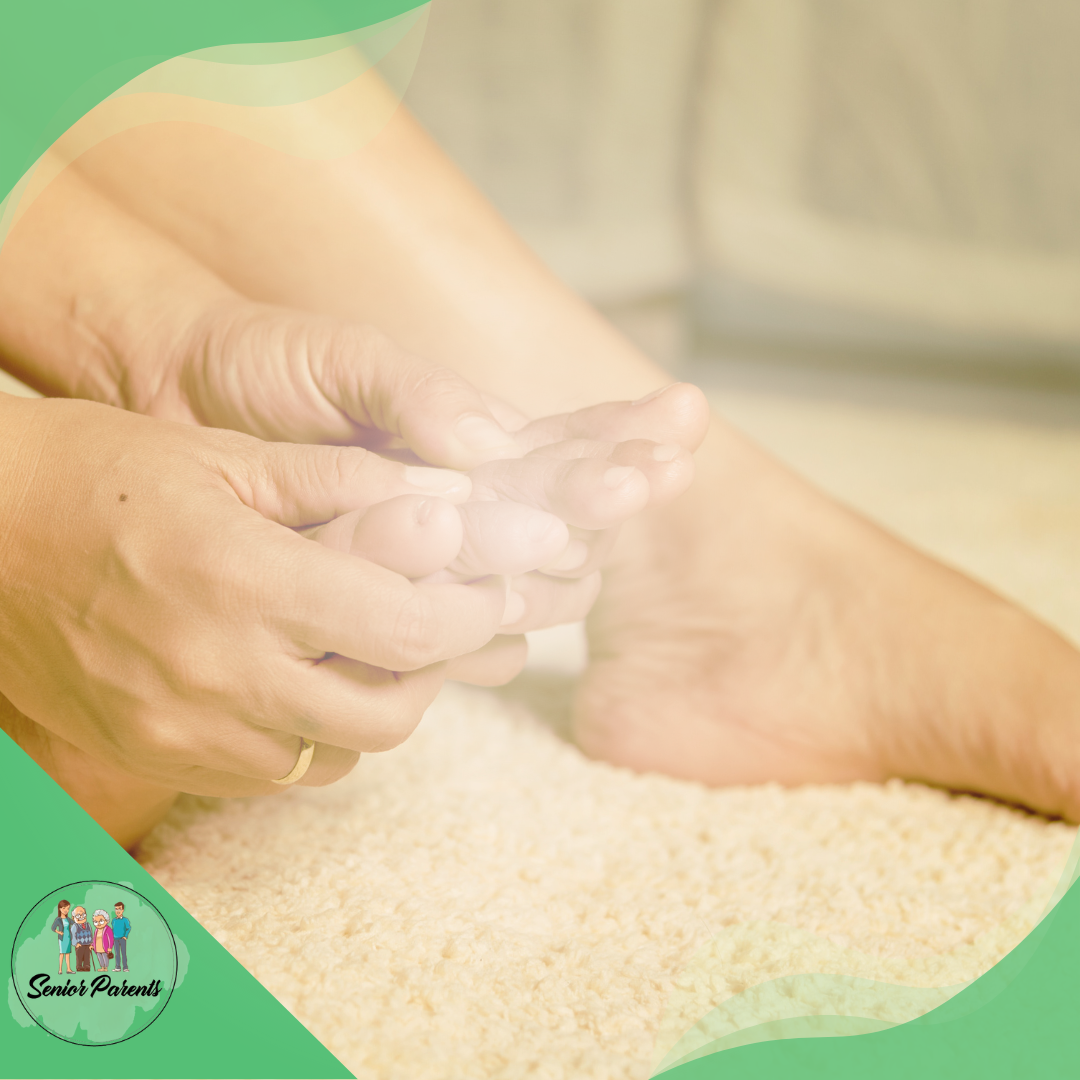
Let’s emphasize the importance of regular foot care, instilling in them the joy of maintaining hygiene, wearing cozy shoes, and engaging in suitable exercises. By empowering them with knowledge, we can help them take proactive steps towards preserving their foot health and overall well-being.
Early detection and swift treatment are the keys to preventing complications and minimizing discomfort. Please encourage them to seek the compassionate expertise of podiatrists and healthcare providers who will offer personalized care and treatment plans tailored to their unique needs.
Together, let’s ensure that our cherished seniors continue to enjoy their particular activities, explore new adventures, and relish the simple pleasure of pain-free steps. Their journey through life has been filled with love and wisdom, and we must ensure their foot health matches their vibrant spirits. With proactive measures and timely care, we can profoundly impact their happiness and independence, allowing them to savor every precious moment of their later years.
Frequently Asked Questions
Can Foot Problems in Older Adults Be Prevented?
Absolutely! While foot problems may become more common as we age, there are several preventive measures that can be taken to maintain good foot health. Here are a few tips:
Choose proper footwear: Wearing comfortable, supportive shoes with a wide toe box can help prevent conditions like bunions, corns, and calluses. Avoid high heels and shoes that are too tight or narrow.
Practice good foot hygiene: Wash your feet daily with warm water and mild soap, and dry them thoroughly, especially between the toes. Moisturize your feet to prevent dryness and cracking.
Trim toenails carefully: Cut your toenails straight across and avoid cutting them too short to prevent ingrown toenails.
Stay physically active: Regular exercise, such as walking and stretching, can improve circulation and strengthen the muscles in your feet.
Manage chronic conditions: Conditions like diabetes and arthritis can affect foot health. It’s important to work closely with your healthcare provider to manage these conditions effectively.
Remember, maintaining overall health and taking care of your feet go hand in hand when it comes to preventing foot problems in older adults.
Are There Any Natural Remedies for Foot Pain in Older Adults?
While it’s always advisable to consult a healthcare professional for an accurate diagnosis and appropriate treatment, a few natural remedies may relieve foot pain in older adults. Here are a couple of options:
Epsom salt soak: Adding Epsom salt to warm water and soaking your feet for 15-20 minutes can help reduce inflammation and soothe foot pain. Epsom salt contains magnesium, which may assist in relaxing muscles and relieving discomfort.
Arnica gel: Topical application of arnica gel, derived from the arnica flower, may help alleviate foot pain and reduce swelling. It is believed to have anti-inflammatory properties and can be found in most health stores.
However, it’s important to remember that natural remedies may not be suitable for everyone and may not address the underlying cause of foot pain. If the pain persists or worsens, seeking medical advice for proper diagnosis and treatment is recommended.
Can Foot Problems in Older Adults Be a Sign of a More Serious Condition?
Yes, foot problems in older adults can sometimes indicate a serious underlying condition. While many foot issues are common and benign, certain signs and symptoms should not be ignored. Some examples include:
Persistent numbness or tingling: Numbness or tingling in the feet can be a sign of peripheral neuropathy, a condition often associated with diabetes or nerve damage.
Severe foot pain or swelling: Intense and unexplained foot pain, accompanied by swelling, warmth, or redness, may indicate an infection or a condition like gout or arthritis.
Non-healing wounds or ulcers: Slow-healing sores or ulcers on the feet, particularly in individuals with diabetes, can indicate poor circulation or nerve damage, requiring immediate medical attention.
Changes in skin color or temperature: Cold or discolored feet may suggest a problem with blood flow or circulation, requiring a healthcare professional’s evaluation.
It’s essential to monitor any changes in foot health and consult a healthcare provider if you notice persistent or concerning symptoms. Early detection and treatment of underlying conditions can help prevent complications and maintain overall well-being.
How Can Bunions and Corns Be Managed in Older Individuals, and When Is Professional Intervention Necessary?
Bunions and corns are often caused by friction and pressure on the feet. Proper footwear, padding, and over-the-counter treatments may offer relief. However, if the conditions worsen or become painful, seeking professional advice from a podiatrist is crucial for proper diagnosis and treatment.
What Role Does Foot Care Play in Overall Health for Older Adults, and Why Is It Essential?
Proper foot care is crucial for overall health in older adults as it directly impacts mobility and quality of life. Regular foot examinations, proper hygiene, and prompt attention to any issues can help prevent complications, such as infections or mobility challenges, ensuring older adults maintain an active and healthy lifestyle.
Unleash the Power of Senior Care: Join the Senior Parents Community Today!
Join the Senior Parents community for heartfelt caregiving content, product reviews, and a passionate connection with fellow caregivers!
Discover the joys of caregiving and connect with our vibrant community!

